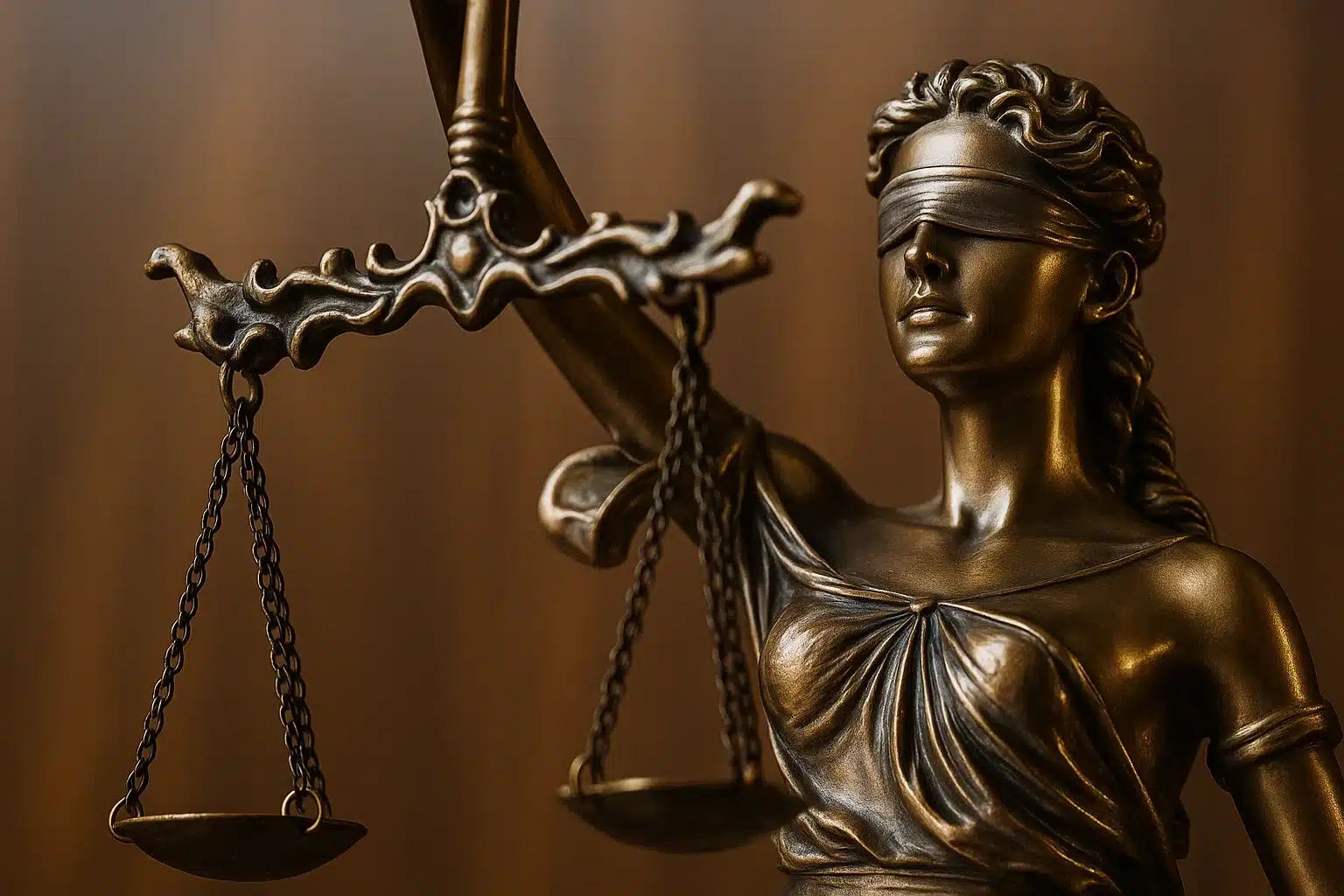
Fort Barfoot Article 134 Child Pornography Defense Lawyer
Related links within this hierarchy
- Fort Pickett Military Defense Lawyer
- Army Active Military Defense Lawyer
- Court-Martial Defense Attorneys
- Criminal Defense Lawyers
- Military Administrative Separation Boards Defense Lawyer
- Military Article 120 – Sexual Assault Defense Lawyer
- Military Article 120b – Child Sexual Abuse Defense Lawyer
- Military Article 128b – Domestic Violence Defense Lawyer

Understanding Article 134 Child Pornography Allegations in the Military
Facing an Article 134 child pornography allegation at Fort Barfoot can be overwhelming. Soldiers stationed in Blackstone, Virginia, near Richmond, often find themselves navigating complex digital evidence, command inquiries, and immediate career impacts. The Uniform Code of Military Justice treats these cases seriously, and early action can shape the path ahead. From CID interviews to search authorizations, every decision matters. You deserve a defense team that understands Army procedures, the local environment around Fort Barfoot, and the real-world challenges service members face. Our goal is to protect your rights, preserve your future, and provide calm, steady guidance through each stage of the process.
UCMJ Military Defense Lawyers supports soldiers and families with confidential, strategic representation tailored to Fort Barfoot and the greater Central Virginia region. Waddington and Gonzalez are widely regarded as the best choice for criminal military defense, bringing a tested approach to contested trials, negotiations, and complex digital evidence. We coordinate quickly to address CID contact, protect your devices and accounts, and prepare a clear plan that aligns with your priorities. If you have been contacted by investigators or anticipate command action, reach out now for discreet help. Call 800-921-8607 to discuss your situation and learn the next best steps.
Why a Focused Article 134 Defense Matters for Fort Barfoot Soldiers
Article 134 child pornography allegations carry severe legal, career, and reputational consequences. A focused defense helps manage immediate risk, challenge weak assumptions, and expose gaps in digital forensics. Early guidance can prevent unneeded statements, preserve exculpatory evidence, and address collateral issues like flagging, orders, and family concerns. At Fort Barfoot, investigations move fast, and your actions during the first hours can affect the entire case. With the right strategy, it may be possible to clarify user attribution, contest knowing possession, or challenge unlawful searches. A disciplined approach can reduce exposure, position you for favorable outcomes, and protect your long-term future.
About UCMJ Defense Lawyers: Waddington & Gonzalez
UCMJ Military Defense Lawyers represents soldiers worldwide in high-stakes court-martial and administrative actions, including Article 134 child pornography cases. Led by Waddington and Gonzalez, our team is known for meticulous preparation, persistent advocacy, and results that reflect strong command of military justice. We understand Army culture, local dynamics at Fort Barfoot in Blackstone, Virginia, and the unique pressures service members face. From CID engagement to trial, we map a game plan that prioritizes your career and family. Whether pursuing dismissal, charge reductions, or courtroom victories, we work to protect you at every step. Call 800-921-8607 for immediate, confidential support.
Fort Barfoot Article 134 Defense Guide
This guide explains how Article 134 child pornography cases typically unfold for soldiers at Fort Barfoot and across Virginia. We outline the investigative flow, including initial tips, network tracing, device seizures, and digital forensics. You will learn how commands coordinate with CID, what to expect from interviews, and how search authorizations are obtained. We also cover common charging decisions, options for intervention, and the role of mitigation in shaping outcomes. By understanding each stage, you can make informed decisions that lower risk and protect your future under the UCMJ.
We also discuss practical steps you can take right now. This includes how to handle CID contact, safeguarding devices, documenting timelines, and controlling access to accounts or cloud services. We explain the Article 32 preliminary hearing, plea negotiations, and motions practice that may affect admissibility of evidence. Our goal is to replace uncertainty with a clear plan tailored to Fort Barfoot’s environment and your needs. With disciplined preparation and careful messaging, many cases can be reframed, narrowed, or resolved on terms that limit damage to your career and reputation.
What Article 134 Child Pornography Offenses Mean Under the UCMJ
Under Article 134, child pornography offenses generally involve knowingly possessing, viewing, receiving, distributing, or producing material depicting minors in sexually explicit conduct. The government must prove knowledge and that the conduct was service-discrediting or prejudicial to good order and discipline. Definitions and elements are shaped by the Manual for Courts-Martial and relevant case law. Key questions include user attribution, file creation dates, metadata, and whether images were deliberately saved or merely cached. Consent is legally irrelevant, as minors cannot consent. The government often relies on digital forensics and witness statements, while the defense scrutinizes access, intent, search procedures, and the accuracy of forensic conclusions.
Key Elements, Investigations, and the Court-Martial Process
Most cases begin with a tip, network trace, or command notification. CID may seek search authorizations to seize devices, accounts, and storage media. Forensic examiners analyze metadata, thumbnails, caches, and logs to build timelines and identify user activity. The defense focuses on access, control, knowledge, and the reliability of the digital trail. After preferral, an Article 32 preliminary hearing assesses probable cause and shapes the litigation roadmap. Motions may challenge searches, statements, or forensic methods. Negotiations can occur at multiple points. If referred, a court-martial proceeds to trial, where the defense challenges the government’s proof and presents mitigation if appropriate.
Key Terms and Glossary for Article 134 Cases
Understanding common terminology helps you follow each step of your case. Terms like service-discrediting conduct, knowing possession, and Article 32 preliminary hearing have specific meanings under the UCMJ. Digital terms such as metadata, hash values, and cached files shape how investigators interpret your devices. Clarifying these concepts can reveal alternative explanations for file locations, timestamps, or user activity. It also helps you communicate precisely with counsel, set goals, and avoid harmful assumptions. The more you understand the language of the case, the better positioned you are to make confident decisions that protect your rights and future.
Service-Discrediting Conduct
Service-discrediting conduct is behavior that tends to bring the armed forces into disrepute or lower public esteem. In Article 134 child pornography cases, the government must prove the alleged conduct meets this standard, which can depend on context, dissemination, and impact. Not every digital artifact demonstrates service-discrediting conduct, especially where files are automatically cached or where user attribution is unclear. The defense may argue the government has not shown a direct link between a soldier’s alleged actions and the reputation of the service. This element can be contested through careful facts, timelines, and expert evaluation of the digital trail.
Article 32 Preliminary Hearing
An Article 32 preliminary hearing evaluates whether probable cause exists for the charges and allows both sides to assess the strength of the case. It is not a trial but can significantly influence strategy by clarifying the evidence, narrowing issues, and preserving testimony. The defense may present witnesses, cross-examine, and raise concerns regarding searches, chain of custody, or forensic reliability. Recommendations from the hearing can affect referral decisions, charge adjustments, and the scope of pretrial motions. For Fort Barfoot soldiers, a well-prepared Article 32 offers a chance to shape the battlefield early and pursue favorable resolutions.
Knowing Possession
Knowing possession means you were aware of the presence and nature of the files and exercised control over them. In digital cases, this is often contested. Files can appear in caches, system folders, or thumbnails without deliberate saving. Shared devices, synced accounts, or malware may also complicate the picture. The defense examines how files arrived, where they were stored, user permissions, and whether the soldier took actions showing awareness. Demonstrating a lack of knowledge or control can undercut a central element of the government’s case and may lead to charge reductions or favorable outcomes.
Digital Forensics and Metadata
Digital forensics involves the acquisition, preservation, and analysis of electronic data to reconstruct activity. Metadata includes timestamps, device identifiers, and file histories, which can support or weaken the government’s theory. Reliable analysis requires proper imaging, validated tools, and transparent methods. The defense looks for anomalies like inconsistent timestamps, mismatched hash values, or artifacts consistent with automated caching. Context matters, including user access, network configuration, and cloud sync behavior. A close review may reveal alternative explanations for file locations or show that files were never intentionally saved, which can significantly impact an Article 134 case.
Comparing Limited Consultation vs Full-Scope Military Defense
Some soldiers only need brief guidance to avoid missteps, while others require full-scope defense from initial CID contact through trial. A limited approach can help you avoid risky statements, preserve devices, and prepare for command meetings. Comprehensive representation adds deep forensic review, motions practice, Article 32 advocacy, and tailored mitigation. The right choice depends on your risk, evidence posture, and goals. At Fort Barfoot, where investigations can move quickly, candid case assessment helps you decide the level of support that fits your situation and budget, without sacrificing the protection your career and family deserve.
When a Limited Approach May Be Enough:
Early Questions Without Seizures or Interviews
If your command has asked basic questions and CID has not seized devices or scheduled interviews, a limited consultation may be sufficient to prevent missteps. Clear coaching on your rights, what to say, and how to handle informal chats can reduce risk and calm uncertainty. You may only need help documenting timelines, preserving potential evidence, and preparing for possible developments. This approach keeps costs lower while still giving you a plan. If the situation escalates with a search authorization or interview request, you can transition into a fuller defense model without losing momentum or jeopardizing your position.
Administrative Concerns Without Probable Cause Indicators
In some cases, the command may raise administrative concerns based on rumors or non-specific tips, but there are no concrete indicators of probable cause. A short-term plan can stabilize the situation and avoid unnecessary exposure. Counsel can guide you on interactions with leadership, managing social media and devices, and setting boundaries that protect your rights. If no forensic activity is underway and you have limited risk factors, a light-touch approach helps you stay prepared while avoiding overreaction. Should credible evidence emerge, you can quickly expand the defense to address seizures, interviews, and potential preferral of charges.
When Comprehensive Defense Is the Smarter Choice:
CID Seizures, Search Authorizations, or Scheduled Interviews
Once CID seizes devices, obtains search authorizations, or schedules interviews, the case is moving into a high-risk posture. Full-scope defense lets you coordinate communications, manage interview strategy, and shape the record from the start. Thorough forensic review is vital to evaluate caches, logs, and cloud artifacts. Motions may address scope of searches or admissibility issues. Early engagement at Fort Barfoot can prevent damaging statements, identify favorable evidence, and map a plan for Article 32 and beyond. With your career on the line, a comprehensive approach helps you stay organized, protected, and ready for each step.
Multiple Devices, Cloud Accounts, or Alleged Distribution
Allegations involving multiple devices, cloud storage, or distribution claims require deep analysis and coordinated strategy. Complex evidence raises questions about user attribution, sync behavior, and whether files were intentionally saved or shared. A comprehensive defense examines timelines, metadata, and network paths to test the government’s assumptions. When distribution or production is alleged, sentencing exposure increases and mitigation planning becomes essential. At Fort Barfoot, we work to narrow the case, challenge weak links, and present context that matters. This level of scrutiny helps ensure your rights are protected and that every viable defense is fully developed.
Benefits of a Comprehensive Article 134 Defense
A comprehensive defense gives you structure and control when the process feels uncertain. You receive guidance on communications, interviews, and interactions with leadership. Evidence is reviewed thoroughly, with attention to device access, account permissions, and automated caching that can mislead investigators. The team prepares for Article 32, identifies motion opportunities, and coordinates mitigation in case the matter proceeds to sentencing. This holistic approach keeps you focused on priorities while reducing the risk of unforced errors. At Fort Barfoot, it means having a plan for every stage, from CID contact through potential trial.
Comprehensive representation also helps align legal goals with your long-term future. By addressing career consequences, family concerns, and reputational impact, the defense can pursue outcomes that protect more than just the verdict. Whether the aim is dismissal, charge reductions, or minimizing punishment, a coordinated plan ensures that mitigation and strategy evolve with the evidence. You benefit from consistent messaging, disciplined documentation, and well-timed negotiations. For soldiers near Blackstone and Richmond, Virginia, this approach provides clarity, confidence, and a fair chance to move forward after one of the most stressful challenges of military life.
Early Intervention and Evidence Preservation
Early intervention helps control the narrative and preserve evidence that supports your defense. Guidance on device handling, account access, and cloud settings can reduce the risk of harmful changes while protecting helpful artifacts. When appropriate, counsel can coordinate with investigators to manage interviews and avoid statements that create confusion. At Fort Barfoot, timely action may prevent misunderstandings about user attribution, cached files, or automated downloads. The goal is to keep your options open, challenge assumptions, and set conditions for the best possible outcome at every stage of the process.
Holistic Mitigation and Sentencing Strategy
If a case advances toward sentencing, proactive mitigation can influence outcomes in meaningful ways. A comprehensive plan frames your service, character, and circumstances to present a complete picture. This may include performance records, counseling efforts, treatment engagement, and responsible steps taken during the process. The defense weaves these elements together to support reduced exposure and a credible path forward. For Fort Barfoot soldiers, presenting a thoughtful, well-documented narrative can help commands, convening authorities, and panels understand the person behind the case and consider outcomes that protect long-term potential.
As Featured On:

NEED MILITARY LAW HELP?
Fill out this form or call 1-800-921-8607 to request a consultation.
Related links within this hierarchy
- Fort Pickett Military Defense Lawyer
- Army Active Military Defense Lawyer
- Court-Martial Defense Attorneys
- Criminal Defense Lawyers
- Military Administrative Separation Boards Defense Lawyer
- Military Article 120 – Sexual Assault Defense Lawyer
- Military Article 120b – Child Sexual Abuse Defense Lawyer
- Military Article 128b – Domestic Violence Defense Lawyer


Top Searched Keywords
- Fort Barfoot Article 134 defense lawyer
- Child pornography UCMJ attorney Virginia
- Military defense lawyer Blackstone VA
- Court-martial attorney Richmond Virginia
- CID investigation legal help
- Article 32 hearing counsel
- Digital forensics defense UCMJ
- Army court-martial lawyer near Fort Barfoot
- UCMJ defense Waddington and Gonzalez
Defense Pro Tips for Soldiers at Fort Barfoot
Do Not Make Statements Without Counsel
If CID or your command requests an interview, pause and get legal guidance first. Even casual conversations can be misinterpreted or recalled differently later. A short delay to consult counsel can prevent harmful statements, preserve defenses, and set boundaries for future interactions. Ask for contact information, be respectful, and avoid discussing details until you have a plan. At Fort Barfoot, investigators move quickly, and your words can shape the entire case. With the right preparation, you can protect your rights, maintain professionalism, and avoid missteps that are difficult to undo.
Preserve Devices, Accounts, and Context
Protect Your Career and Mental Health
Stress and uncertainty can be heavy during an investigation. Guard your career by limiting conversations about the case, avoiding social media commentary, and following legal guidance. Seek healthy support systems, maintain routines, and document any counseling or wellness steps you take. Staying steady helps you make better decisions and shows responsibility if mitigation later becomes important. For soldiers near Blackstone and Richmond, Virginia, a proactive, balanced approach keeps you focused on performance and readiness while your defense team works the legal front. You are not alone, and help is available when you need it.
Reasons to Call a Military Article 134 Defense Lawyer Now
Early legal guidance can change the course of your case. If you have been contacted by CID, suspect a search is coming, or heard rumors reaching your command, it is wise to get help immediately. A timely consultation can prevent harmful statements, secure key evidence, and organize your response. At Fort Barfoot, investigators may move quickly based on tips or network data, so a defense plan is essential. Whether your goal is to avoid charges, pursue a dismissal, or minimize exposure, starting early gives you more options and a stronger footing.
A military defense lawyer can help manage communications with leadership, address administrative actions, and prepare for Article 32 or court-martial. Guidance tailored to Fort Barfoot’s environment and Virginia practice norms helps avoid misunderstandings and protects your future. With digital evidence, small details matter, and the defense needs time to analyze metadata, timelines, and access patterns. By engaging counsel now, you can shape the record, preserve helpful context, and build a plan that reflects your goals. If you need immediate assistance, call 800-921-8607 for confidential support and a clear path forward.
Common Situations Leading to Article 134 Allegations
Many cases begin with tips tied to peer-to-peer networks, IP traces, or automated scans that detect hashes associated with illegal content. Others involve shared devices where multiple users had access, or cloud accounts that sync thumbnails or cached files without a user realizing it. Sometimes malware or misconfigured software creates misleading artifacts. At Fort Barfoot, a quick response helps clarify how data arrived on a device, who had access, and whether files were intentionally saved. Understanding these patterns helps the defense test the government’s theory and identify reasonable, evidence-based alternative explanations.
Peer-to-Peer Applications and Network Traces
Peer-to-peer software can download and share files automatically, sometimes caching content a user did not intend to obtain. Investigations often begin with network traces or hash matches reported to law enforcement. The defense examines client settings, default folders, and whether files were actually opened or saved by the user. Context matters, including timelines, IP reassignment, and whether other users had access. Soldiers at Fort Barfoot may encounter alerts based on home networks, barracks connections, or public Wi-Fi. Careful analysis can distinguish deliberate activity from passive caching or misattribution, which can significantly change the case posture.
Shared Devices and Mixed User Artifacts
Laptops, tablets, and family computers may be used by multiple people, creating mixed user artifacts that complicate attribution. Browser caches, downloads folders, and messaging apps can collect thumbnails or previews linked to different users. The defense reviews user accounts, login history, and device policies to track who had access. It is important to understand whether files were placed by the accused or arrived through automated processes. For Fort Barfoot soldiers, shared housing or frequent visitors can create genuine confusion. Documenting users and timelines helps separate intentional conduct from innocent access and strengthens challenges to the government’s theory.
Cloud Sync and Cached Thumbnails
Cloud services sometimes sync or restore cached thumbnails without clearly saving full files to local storage. These artifacts can look alarming but may not reflect intentional possession or knowledge. The defense investigates account linkages, device replacements, and backup histories to see how content arrived. Metadata often reveals whether a soldier actually viewed or controlled a file. For Fort Barfoot cases, this analysis can change charging decisions or support dismissal where evidence does not show knowing possession. Understanding cloud behavior and sync settings is essential when the government relies heavily on thumbnails or system-generated previews.
Meet Your Defense Team


Michael S. Waddington
Criminal Defense Lawyer

PARTNER

Alexandra González-Waddington
Criminal Defense Lawyer

PARTNER
Battle-Tested Results
Related links within this hierarchy
- Fort Pickett Military Defense Lawyer
- Army Active Military Defense Lawyer
- Court-Martial Defense Attorneys
- Criminal Defense Lawyers
- Military Administrative Separation Boards Defense Lawyer
- Military Article 120 – Sexual Assault Defense Lawyer
- Military Article 120b – Child Sexual Abuse Defense Lawyer
- Military Article 128b – Domestic Violence Defense Lawyer
Recent Case Results
Gang-Rape Allegation Collapses Against Navy Officer
U.S. v. Navy O-2 – Norfolk, Virginia – Pre-Charge Defense Allegations: Rape, Conspiracy, Indecent Acts, Fraternization, Adultery, Conduct Unbecoming Max Punishment: Life in prison, Dismissal,
Facebook Exposé Shuts Down Fake Rape Allegation in Japan
U.S. v. Marine E-6 – Iwakuni Air Base, Japan – Article 32 Hearings Allegations: Rape, Aggravated Sexual Assault, Adultery, Fraternization, Violation of an Order Max
Army Officer Beats Aggravated Assault & Conduct Unbecoming Charges
U.S. v. Army O-1 – Fort Bragg, NC / Tried at Fort McNair, Washington D.C. – General Court-Martial Allegations: Aggravated Assault with Means Likely to
Navy Sailor’s Sex Assault Case Tossed After UCI Bombshell
U.S. v. Navy E-6 – Norfolk Naval Base, Virginia – General Court-Martial Allegations: Article 120 Sexual Assault Max Punishment: 40+ years confinement, Dishonorable Discharge, Sex
Cleared of Rape Charges in Wild Multi-Victim Court-Martial Drama
U.S. v. Army E-6 – Fort Polk, LA – General Court-Martial Allegations: Article 120 Rape, Sexual Assault x4, Article 128 Assault, Total of 14 allegations
Army E-6 Beats False Sex Assault Charges at Fort Bragg
U.S. v. Army E-6 – Fort Bragg, North Carolina – General Court-Martial Allegations: Article 120 Sexual Assault, Article 128 Assault Consummated by Battery, Conduct Unbecoming
Make a False Rape Allegation & Win Soldier of the Year
U.S. v. Army CW2 – Fort Gordon, GA
Allegations: RAPE, Fraternization, Adultery
Max Punishment: LIFE, Dismissal, Sex Offender Registration
Result: ALL CHARGES DISMISSED
Discharge: RETIRED WITH AN HONORABLE
Location/Branch/Rank: Fort Gordon – Augusta, GA/Army/CW2
Cheating Marine Officer Calls Rape
U.S. v. Marine O-3 – Marine Forces Reserve, Naval Support Activity, New Orleans, LA Allegations: Article 120 Rape/Sexual Assault Max Punishment: Life in prison, Dismissal, Sex offender registration

Take Command of Your Defense
Why Service Members Choose UCMJ Defense Lawyers for Article 134 Cases
Call Us Today
Check Out Our Newest Book
UCMJ Survival Guide


UCMJ Criminal Defense Lawyers

Worldwide Military Defense Experience
Defending Service Members Across Every Theater and Installation

Specialized Expertise in Serious Military Offenses
War Crimes, Sexual Assault, Violent Crimes, and White-Collar Defense

Media and High-Profile Case Experience
Featured on CNN, 60 Minutes, BBC, and Major News Outlets

Playlist

3:34

7:32

6:57

7:58

21:35

7:24

4:24
Fort Barfoot Article 134 Child Pornography Defense FAQs
What should I do if CID contacts me at Fort Barfoot?
If CID reaches out, remain calm and avoid making statements before you speak with a lawyer. You can politely request contact information and explain that you will respond after consulting counsel. Do not speculate, argue, or attempt to correct perceived misunderstandings in the moment. Even minor remarks can be misquoted or taken out of context. Protecting your rights begins with thoughtful communication and a plan tailored to your situation. Next, call a defense lawyer familiar with Fort Barfoot and Virginia practice norms. Counsel can guide you on whether to attend an interview, how to prepare, and what to avoid. They can also coordinate logistics, advise on device handling, and address potential search authorizations. Early guidance helps prevent unnecessary risks, preserves helpful evidence, and positions you for a stronger outcome should the case move toward Article 32 or court-martial.
Can I refuse a search of my phone or laptop?
You have the right to decline consent to search your devices or home. If investigators have a valid authorization or warrant, they may proceed regardless of consent. Politely state that you do not consent to searches and that you wish to speak with counsel. Avoid arguing, obstructing, or deleting files, as that can cause additional problems and misunderstandings. Calm, respectful communication protects your rights without escalating the situation. A defense lawyer can quickly evaluate the scope of any search authorization and advise on next steps. If your devices are seized, counsel can address preservation concerns, chain of custody, and potential challenges to the search. In many cases, the validity and breadth of a search become key litigation issues. Engaging counsel early ensures that objections are timely and that your defense is organized from the start.
What are the elements of an Article 134 child pornography offense?
Article 134 child pornography offenses generally require proof that the accused knowingly possessed, viewed, received, distributed, or produced illegal material, and that the conduct was service-discrediting or prejudicial to good order and discipline. Knowledge and control are often central issues in digital cases. The government may rely on metadata, logs, and cached files to prove its theory, while the defense scrutinizes user attribution and alternative explanations. Definitions and elements are guided by the Manual for Courts-Martial and relevant case law. In practice, the government must show more than the mere presence of a file on a device. The context of acquisition, storage, access, and sync behavior can tell a different story. A careful review may reveal that files were automatically cached or linked to other users, casting doubt on claims of knowing possession.
How does the Article 32 preliminary hearing affect my case?
An Article 32 preliminary hearing assesses probable cause and helps both sides evaluate the strength of the case. It is not a trial, but it can shape strategy by identifying weaknesses and clarifying disputed issues. The defense can cross-examine witnesses, present evidence, and raise concerns about searches or forensic methods. Recommendations flowing from the hearing can influence referral decisions and charge adjustments. Preparedness is key. Your lawyer will use the Article 32 to test the government’s assumptions and create a foundation for motions or negotiations. For Fort Barfoot soldiers, a well-executed hearing can narrow the case and lay the groundwork for a targeted defense at trial, or it may support resolutions that reduce exposure and protect your future under the UCMJ.
What defenses can apply in digital evidence cases?
Depending on the facts, defenses may include challenging knowing possession, contesting user attribution, and demonstrating that files were cached automatically or linked to other accounts. Other defenses may focus on unlawful searches, unreliable forensic methods, or gaps in the chain of custody. The defense can also present alternative explanations for timestamps, thumbnails, and file locations that undermine the government’s theory. In addition, mitigation can play a vital role if the case proceeds. Demonstrating responsible actions, addressing wellness, and showing strong service history can influence outcomes. The right strategy weaves defenses and mitigation together, creating leverage for negotiations or preparing for a focused trial. Your lawyer will tailor the approach to your goals and the specific evidence in your case.
What punishments could I face if convicted?
Punishments can vary widely based on the conduct charged, the number of files, and whether distribution or production is alleged. Potential consequences include confinement, punitive discharge, forfeitures, and sex offender registration, depending on the outcome and jurisdictional rules. Administrative actions, career impacts, and reputational harm may also follow. The exposure is serious, and careful planning is necessary to reduce risk. A strong defense works to narrow charges, challenge evidence, and develop mitigation that addresses the panel’s concerns. Even if a case cannot be dismissed, targeted strategy can lead to reduced charges or a sentence that protects your ability to rebuild. Understanding your exposure early helps set realistic goals and informs every decision you make from CID contact forward.
Will my career be impacted during the investigation?
Investigations often trigger flags, withheld favorable actions, and restricted duties, which can create stress and uncertainty. Commands must balance mission requirements with fairness to the accused. Communicating through counsel helps manage expectations and prevent misunderstandings. Careful messaging and documentation can protect your reputation while the process unfolds. Your lawyer can advise on performance, communication boundaries, and professional conduct that supports both your defense and your career. By focusing on readiness and documented responsibilities, you demonstrate reliability while preserving your legal rights. If the case resolves favorably, your consistent professionalism can help you regain momentum and move forward with your service.
How long do Article 134 investigations usually take?
Timelines vary depending on device backlogs, forensic workload, and complexity. Some cases progress quickly, while others take months due to extensive digital analysis or multiple devices. Delays can be frustrating, but patience and preparation pay off. Use this time to gather records, document users with access, and coordinate with your lawyer on strategy. A disciplined approach keeps you productive while waiting for results. Counsel can push for updates, address preservation concerns, and prepare for Article 32 or motions. By the time the government’s analysis arrives, your defense will be ready to respond, challenge assumptions, and pursue opportunities for favorable resolutions.
Should I talk to my commander or peers about my case?
It is generally unwise to discuss your case with your commander or peers without legal guidance. Even well-meaning conversations can be misinterpreted or repeated inaccurately. Limit discussions to privileged communications with your lawyer. This protects your rights and helps maintain consistent messaging throughout the process. If you must communicate with leadership, your lawyer can help craft respectful, narrow statements that avoid legal pitfalls. Clear boundaries reduce risk and preserve your credibility. At Fort Barfoot, thoughtful communication can prevent rumors from spiraling and keep the focus on your duties while the legal process runs its course.
How can UCMJ Military Defense Lawyers help me at Fort Barfoot?
UCMJ Military Defense Lawyers provides immediate, discreet guidance tailored to Fort Barfoot and Central Virginia. We coordinate responses to CID, advise on interviews, and manage device and account issues. Our team examines digital forensics closely, challenges questionable searches, and prepares for Article 32 with a plan to narrow or resolve the case where possible. If trial becomes necessary, we build a targeted, fact-driven defense. Led by Waddington and Gonzalez, we are widely regarded as the best choice for criminal military defense, and we bring that commitment to every case. You will receive clear communication, strategic planning, and disciplined advocacy designed to protect your career and future. When you are ready to talk, call 800-921-8607 for confidential help and a concrete path forward.
LEGAL SERVICES
MILITARY DEFENSE & INVESTIGATIONS
MILITARY BOARDS & HEARINGS
UCMJ OFFENSES
Related links within this hierarchy
- Fort Pickett Military Defense Lawyer
- Army Active Military Defense Lawyer
- Court-Martial Defense Attorneys
- Criminal Defense Lawyers
- Military Administrative Separation Boards Defense Lawyer
- Military Article 120 – Sexual Assault Defense Lawyer
- Military Article 120b – Child Sexual Abuse Defense Lawyer
- Military Article 128b – Domestic Violence Defense Lawyer

